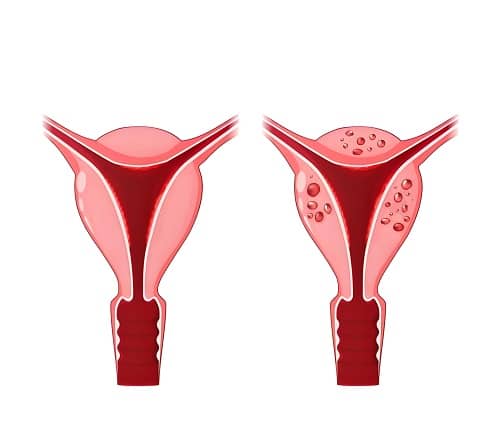Adenomyosis is a common gynecological condition characterized by severe menstrual pain and heavy menstrual bleeding. While the exact cause remains unclear, research suggests several factors may contribute to its development.

Table of Contents
- 1. Genetic Factors
- 2. Hormonal Imbalance
- 3. History of Surgeries
- 4. Immune System Dysfunction
- 5. Age and Reproductive History
1. Genetic Factors
Family history may play a role in the development of adenomyosis.
- Inherited Risk: Women with close relatives who have adenomyosis may have a higher chance of developing the condition.
- Genetic Susceptibility: Certain gene variations might affect the growth of endometrial tissue, making it more likely to invade the uterine muscle.
2. Hormonal Imbalance
Excess estrogen levels are believed to be a key factor in adenomyosis.
- Role of Estrogen: Estrogen promotes the growth of endometrial tissue. An overproduction of estrogen may lead to abnormal proliferation, allowing endometrial cells to invade the uterine muscle.
- Hormonal Fluctuations: Imbalanced hormone levels can disrupt the normal functioning of the uterus, increasing the risk of adenomyosis.
3. History of Surgeries
Women who have undergone uterine-related surgeries may have a higher risk of adenomyosis.
- Procedures such as C-sections, fibroid removal, or dilation and curettage (D&C) may cause trauma to the uterine wall, providing a pathway for endometrial cells to enter the muscle layer.
- Post-Surgical Uterine Repair may be irregular, altering the normal endometrial growth pattern and increasing susceptibility to adenomyosis.
4. Immune System Dysfunction
An impaired immune system may fail to recognize and remove misplaced endometrial cells, allowing them to invade the uterine muscle.
- Immune Disorders: Dysfunctional immune responses might prevent the body from clearing stray endometrial cells, allowing them to grow in abnormal locations.
- Chronic Inflammation can also contribute to the progression of adenomyosis, worsening symptoms over time.
5. Age and Reproductive History
Adenomyosis is more commonly diagnosed in women aged 30 to 40, particularly those who have not given birth.
- Aging and Uterine Changes: As women age, the endometrial lining undergoes multiple cycles of thickening and shedding, increasing the risk of adenomyosis.
- Impact of Pregnancy: Some studies suggest that women who have never given birth may have a higher likelihood of developing adenomyosis, although the exact mechanism remains unclear.
Conclusion
Although the precise cause of adenomyosis is still unknown, factors such as genetics, hormonal imbalance, previous surgeries, immune dysfunction, and age-related changes may contribute to its development. If you experience severe menstrual pain, heavy bleeding, or other related symptoms, it is essential to seek medical advice for proper diagnosis and management.